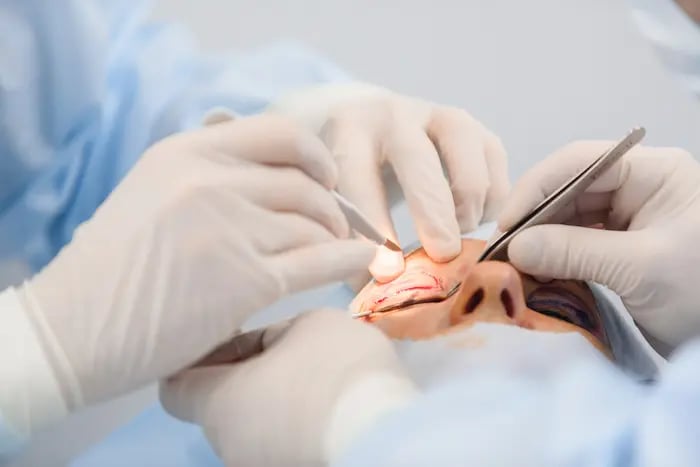Plastic eye surgery

.webp?width=700&height=467&name=close-up-of-the-face-of-patient-who-is-undergoing-blepharoplasty-the-surgeon-cuts-the-eyelid-and-performs-manipulations-using-medical-instruments-min%20(1).webp)
Plastic eye surgery
Plastic and orbital eye surgery copes with pathologies, and either aesthetic or functional
defects associated with ocular orbits, eyelids, and lacrimal ducts, as well as the mid and
upper part of the face.
Plastic eye surgery is a subspecialty of eye surgery. It focuses on aesthetic improvement
and on the correction of functional problems associated with the eyes and the tissues
around them. Some examples of plastic eye surgery procedures include:
- Blepharoplasty: Surgery to remove skin and fat tissue excess from the eyelids.
- Eyelid lift: Surgery to lift and tone up the eyelid muscles and skin.
- Droopy eyelid reparation (ptosis): Surgery to lift droopy eyelids.
- Links/Face lifting: Surgery to remove the vertical creases that appear around the nose.
- Wrinkle repair: Surgery to remove wrinkles and creases around the eyes.
This surgery is done under either local or general anesthesia, depending both on the
procedure and the patient. The results are usually visible immediately, and may greatly
improve the appearance and operation of the eyes. Nevertheless, as any other surgery,
this one implies certain risks, and possible complications. For this reason, it is important to talk to a qualified and experienced eye plastic surgeon, before making any decision.
Causes: Eyelid malpositions (such as either ectropion or entropion), congenital problems or others acquired with aging (fat pads, wrinkles, skin excess or droopy eyelids), accidents (fractures of orbit), infections (sties), swellings (thyroid disorders), intraorbital or eye tumors (eyelid cancer), anomalies in lacrimal ducts.
Procedure: There are different procedures for eyelid plastic surgery or blepharoplasty, in which skin excess is either tightened or removed, fat excess is either repositioned or removed, and
muscles are reinforced. This considerably improves the aesthetic aspect of the eyelids,
and there is a very natural process of rejuvenation without any visible incisions. The results of blepharoplasty remain in time, that is, the patient’s aging process will continue naturally, but his/her sight will look younger than the one corresponding to his/her age. This will help to keep good ocular health, as the eyelid is essential in the eye’s protection and proper operation.
How long does a plastic eye surgery last?
Such ambulatory procedure is done with all the necessary care for the patient, with local
anesthesia and sedatives. It takes between 1 and 2 hours, approximately.

 Pay your appointment
Pay your appointment

